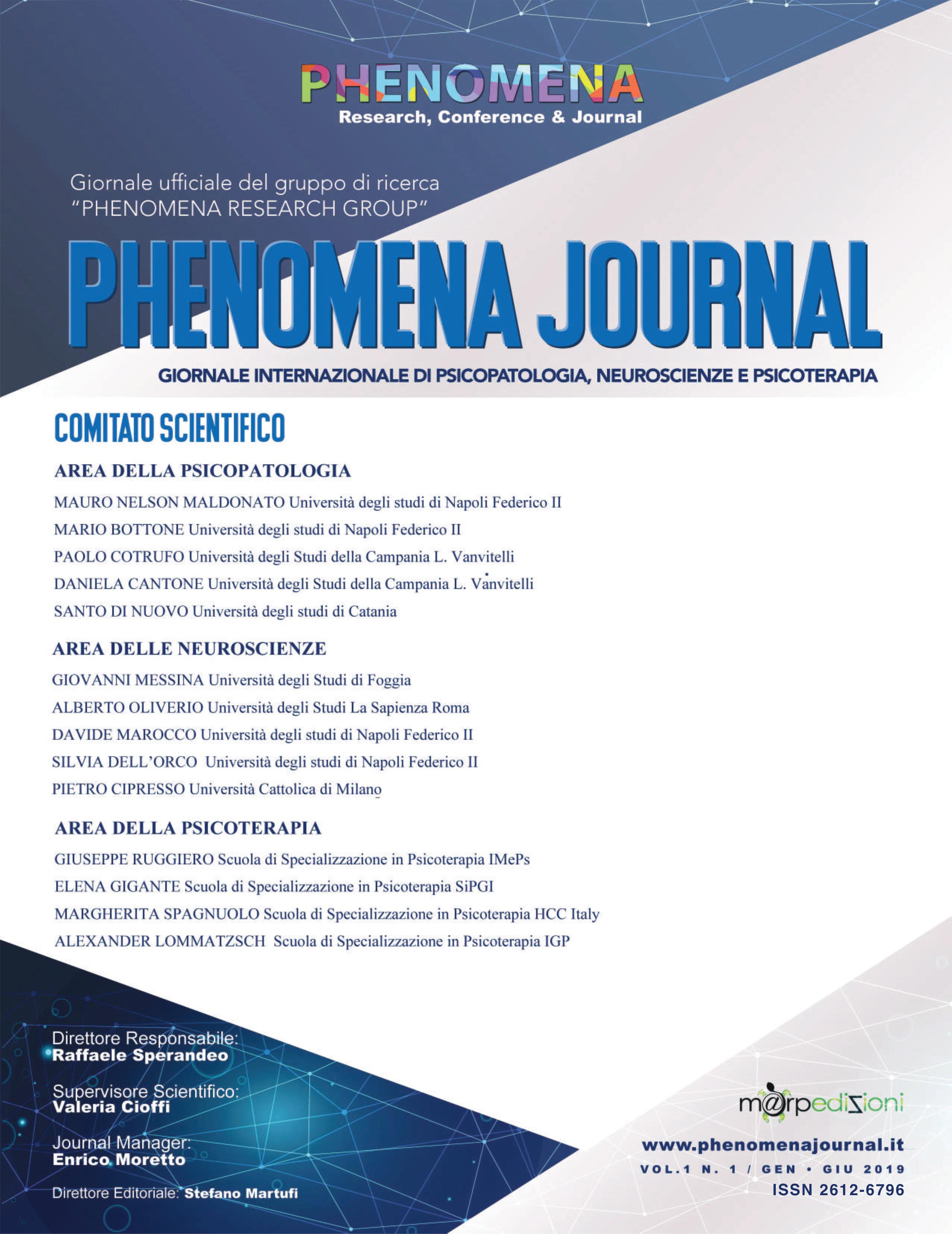La Rêverie in Psicoanalisi e la teoria del Sé in Gestalt: Un lavoro di integrazione attraverso lo studio delle esperienze immaginative in psicoterapia
Pubblicato 26.06.2019
Come citare
Abstract
The imaginative world, as emerges from the relational dynamic, appears to be the connecting element between thoughts and emotions, and constitutes a factor of great communicative efficacy for therapist and patient. Bion’s work on the concept of rêverie, on the alpha function analysis and on the role of beta elements, shows common standpoints with the Theory of the Self developed by Pearls. This work intends to bring into sharper focus the role of the Imagination as unconscious communication instrument, by trying to classify the imaginative experiences with which the therapist is confronted throughout the course of the relationship with the patient. Type 1 images are identified that originate from the memory register of the therapist and Type 2 images originated instead from a new construction, or more similar to the dreamlike imaginative productioTwo different ways will be described, through which the therapists mind satisfies its own needs of imagining what comes from the experience told by the patient. These two different representations will be treated from three different points of view: Bion’s psychoanalytic work, Gestalt’s psychotherapy and Pearl’s work. By putting together different models of the countertransference function, this work makes an attempt to describe how both approaches address this specific function of the mind, even if through different languages. The work emphasizes nevertheless show the Imagination can be used in the clinical practice as a connecting instrument between the two actors of the therapeutical relationship.
Keywords: Imaginative experiences, integration, rêverie, therapeutic relationship, Theory of the Self.
ABSTRACT IN ITALIANO
Il mondo immaginativo che emerge dalla dinamica relazionale sembra l’elemento di collegamento tra pensieri ed emozioni costituendo un fattore di grande potenzialità comunicativa. Il lavoro di Bion sul concetto di rêverie e sull’analisi della funzione alfa ed il ruolo degli elementi beta, mostra punti di convergenza sul piano fenomenologico con la teorie del Sé di Perls. Questo lavoro attraverso il tentativo di classificare le esperienze immaginative sperimentate dal terapeuta nel corso della relazione con il paziente, intende focalizzare l’attenzione sul ruolo che l’immaginazione assume come strumento di comunicazione inconscia. Vengono individuate immagini di Tipo 1 ovvero originate dal registro di memoria del terapeuta e immagini di Tipo 2 scaturite invece da una costruzione inedita. Saranno descritti quindi due modi attraverso cui la mente soddisfa la propria esigenza di figurarsi ciò che proviene dalla esperienza narrata dal paziente. Queste diverse modalità di rappresentazione vengono osservate dalla prospettiva del lavoro psicoanalitico di Bion e da quella della psicoterapia della Gestalt e del lavoro di Perls. Mediante un lavoro di integrazione tra modelli sulla funzione del controtransfert, si è cercato di descrivere come entrambi gli approcci affrontano, seppur con linguaggi diversi, questa funzione della mente sottolineando come l’immaginazione viene usata nella pratica clinica come strumento di connessione tra i due attori della relazione terapeutica.
Parole chiave: Esperienze immaginative, integrazione, rêverie, relazione terapeutica, Teoria del Sé.

